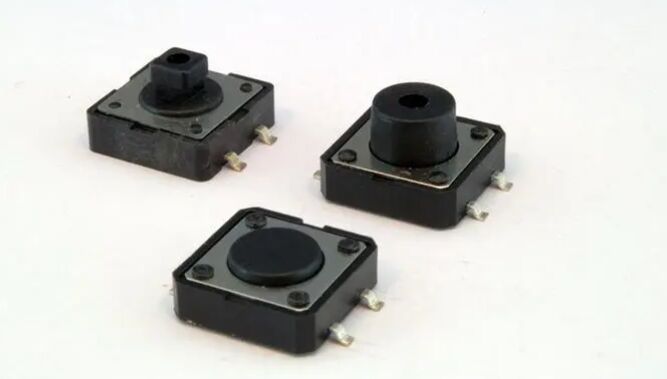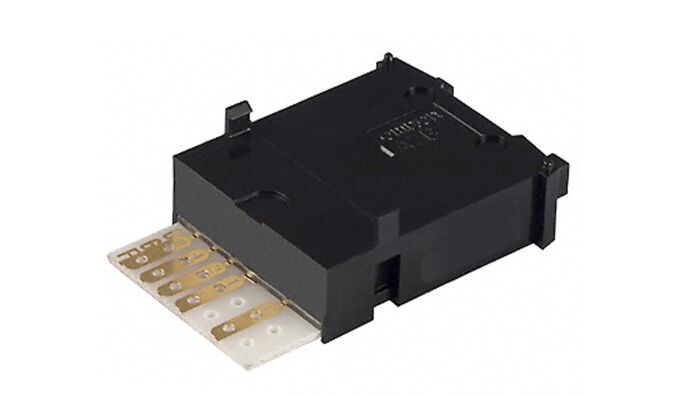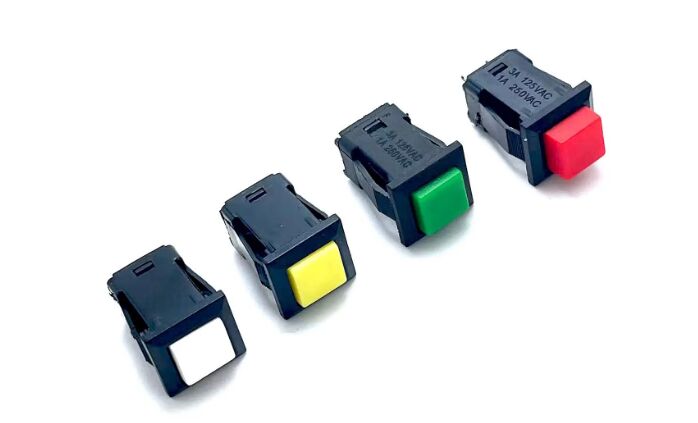Ⅰ. Working principle of the switch
Ⅱ. Contact bounce of the switch
Ⅲ. Contact configuration of the switch
Ⅳ. Classification of switches
Ⅴ.What is the working principle of a switch?
Ⅵ.What are the classification of switches?
Ⅶ.What are the classification of switches according to construction?
Ⅷ.What are the 4 basic switches?
Ⅸ.What is the working Principle of the circuit?
X.What are the principles of two way switch?
Ⅰ. Working principle of the switch
The working principle of the switch is basically to realize the opening and closing of the circuit according to the electrical and mechanical principles. Different types of switches work differently.

1. Delay switch: close the power switch K2, and then press the button switch K1. At this time, the crystal diodes V1 and V2 are turned on, and the relay is closed. At the same time the power supply charges the capacitor C. When K1 is disconnected, because C has been charged, it will discharge through R and V1V2, thereby maintaining the transistor to continue to conduct, and the relay is still closed. After a period of discharge, when the voltage between the two poles of C drops to a certain value, it is not enough to keep the triode conducting, and the relay is released. The time interval from K1 disconnection to relay release is called delay time. It depends on the size of R and C.
2. Manual switch: The most common type of switch, such as a push button switch or toggle switch, is manually operated to open or close a circuit. When a lever or button is pressed or toggled, the mechanical structure inside changes the position of the contacts, opening or closing a circuit.
3. Smart switch: Smart switches are usually connected wirelessly or through a network, and the on-off state can be remotely controlled through a smartphone or other devices.
4. Pressure switch: The pressure switch will open and close the circuit according to the pressure change of the external object. When the external pressure changes, the internal mechanical structure of the switch triggers the opening and closing of the circuit.
5. Hall effect switches: These switches use the Hall effect to switch circuits on and off by sensing an external magnetic field. Under the action of the magnetic field, the Hall element generates a voltage difference, which triggers the operation of the switch.
6. Temperature switch: The temperature switch will open and close the circuit according to the change of the surrounding temperature. The internal temperature sensing element will trigger the operation of the switch when a certain temperature is reached.
7. Automatic switch: Some switches have automatic features, such as infrared sensor switches. These switches automatically open and close circuits based on received signals, such as infrared light.
8. Photosensitive switch: The photosensitive switch will open and close the circuit according to the change of the intensity of light. When the outside light reaches a certain level, the light sensor triggers the operation of the switch.
Ⅱ. Contact bounce of the switch
Contact bounce is a common problem with mechanical switches and relays. The contacts of switches and relays are usually made of resilient metal. When the contacts are knocked together, the contacts are under the action of the impulse force and the elastic force,causing the bouncing part to occur one or more times before the contacts stabilize. The result is a rapid pulse of current instead of a definite transition from zero to full current. This effect is usually not important in power circuits, but it can cause problems in some analog or logic circuits because the fast switching response is fast enough to cause the circuit to mistake the switching pulses for data flow.
The effect of contact bounce can be eliminated by using a mercury switch, but this method is not often used because of the hazard of mercury leakage. Another approach is to add a low-pass filter to the contact circuit to reduce or eliminate composite pulses. In digital systems, anything can be controlled by taking multiple samples of the contact state or imposing a delay so that the contact bounce settles before the desired contact input state. One way is to implement it with a Single Pole, Double Throw switch, which is to use an SR latch. [3] These methods are debouncing circuits.
The term debounce is derived from this, and it appears in the software development industry to describe a rate-limiting or thottling the frequency of an implementation method that eliminates switch bounce.

Ⅲ. Contact configuration of the switch
The contact configuration of a switch refers to the connection method and number of contacts inside the switch, which determine how the switch affects the on-off state of the circuit when it is operated.
A set of junctions is closed when two junctions are in contact with each other, allowing electrons to flow from one junction to the other. The open of a group of contacts means that the two contacts are not in contact with each other, and electrons are not allowed to pass through under normal voltage.
Some contacts are open under normal conditions, and need external force or other signals to become closed. This kind of contact is called "Normal Open" contact or A contact, also known as Break. Other contacts with opposite characteristics (closed circuit under normal circumstances, and need external force or other signals to become open circuit) are called "Normal Close" contacts, or B contacts, also known as Make.
The above-mentioned abbreviations often appear in wiring diagrams—although there are many diagrams that directly use different symbols to distinguish the two—in order to indicate the contact characteristics to be used, which is helpful for wiring, analysis and problem diagnosis. Some switches have the above two kinds of contacts at the same time, so you can choose to conduct a normally closed contact or a normally open contact. At this time, there is usually a common contact. This common point is called "C contact".
"Closed first, then opened" contact, because when switching, the contact to be switched is first turned on, and then the original contact is disconnected.
"Open first, then close" contact, because when switching, the original contact is disconnected first, and then the contact to be switched is turned on.
Most of the switches use the instantaneous power conversion after spring preloading, so that the contacts can be switched quickly when switching.
It is necessary to decide which contact to use according to the application: for example, a switch to switch two sets of power sources may need to use a "first open and then close" contact to avoid short circuit caused by two power supplies being connected at the same time.
Common Switch Contact Configurations:
1. Single Pole Single Throw (SPST): This is the simplest contact configuration. It has a contact that turns a circuit on or off.
2. Single Pole Double Throw (SPDT): This configuration has one contact but can switch between two different circuits, when one is open the other is closed and vice versa.
3. Double Pole Single Throw (DPST): This configuration has two contacts that can simultaneously open or close two separate circuits.
4. Multiple poles and multiple Throws: In some complex applications, more contact configurations may be required. For example, Tripolar Double Throw (TPDT), etc.
5. Bipolar Double Throw (DPDT): This configuration has two contacts that can switch between two different pairs of circuits at the same time.
6. Multi-position switch: In addition to the common two positions (on and off), there are also some multi-position switches that can switch between multiple positions.
Ⅳ. Classification of switches
1. Proximity switch: Proximity switch is also called non-contact stroke switch. In addition to stroke control and limit protection, it is also a non-contact detection device, which is used to detect the size of parts and speed measurement, etc., and can also be used for frequency conversion. Counter, frequency conversion pulse generator, liquid level control and automatic connection of processing programs, etc. Features include reliable operation, long life, low power consumption, high reset positioning accuracy, high operating frequency, and adaptation to harsh working environments.
Main uses of proximity switches: Proximity switches are widely used in aviation, aviation, aerospace technology and industrial production. In daily life, such as automatic doors of hotels, restaurants, garages, and automatic hot air fans are used. In terms of security and anti-theft, important places such as data files, accounting, finance, museums, and vaults are usually equipped with anti-theft devices composed of various proximity switches. In measurement technology, such as length and position measurement; in control technology, such as displacement, speed, acceleration measurement and control, a large number of proximity switches are also used.
Common proximity switches are:
Capacitive proximity switches: The measurement of the switch is usually one plate that makes up the capacitor, while the other plate is the housing of the switch. This case is usually grounded or connected to the case of the device during the measurement. When an object moves towards the proximity switch, regardless of whether it is a conductor or not, due to its proximity, the dielectric constant of the capacitor will always change, thereby changing the capacitance, and the state of the circuit connected to the measuring head will also change accordingly. Change, which can control the switch on or off.
Photoelectric proximity switch: A switch made of photoelectric effect is called a photoelectric switch. Install the light-emitting device and the photoelectric device in the same detection head according to a certain direction. When a reflective surface (object to be detected) approaches, the photoelectric device will output a signal after receiving the reflected light, so that it can "sense" that an object is approaching.
Eddy-current proximity switch: This switch is sometimes called an inductive proximity switch. It uses a conductive object to generate an eddy current inside the object when it is close to the proximity switch that can generate an electromagnetic field. The eddy current reacts to the proximity switch, causing the internal circuit parameters of the switch to change, thereby identifying whether a conductive object is approaching, and then controlling the switch to be turned on or off.
Hall proximity switch: It is a magnetic sensitive element. A switch made of a Hall element is called a Hall switch. When a magnetic object moves close to the Hall switch, the Hall element on the detection surface of the switch will cause the state of the internal circuit of the switch to change due to the Hall effect, thereby identifying the presence of a magnetic object nearby, and then controlling the switch to be turned on or off. The detection object of this proximity switch must be a magnetic object.
Pyroelectric proximity switch: A switch made of an element that can sense temperature changes is called a pyroelectric proximity switch. This kind of switch is to install the pyroelectric device on the detection surface of the switch. When an object with a different temperature from the environment approaches, the output of the pyroelectric device will change, so that the object can be detected.
2. Delay switch: Delay switch is a switch with time control function, it will have a predetermined delay time after operation, and then it will switch state. The delay switch is a kind of switch that uses the electronic component relay installed in the switch to delay the switch circuit. The delay switch is divided into voice-activated delay switch, light-activated delay switch, touch-activated delay switch and so on.
3. Classified by purpose
Toggle Switches: is a common manually operated switch, usually used to open or close a circuit. It looks like a small toggle button that can be manually flipped or toggled to change the state of the circuit. Its characteristic is that it needs to change the state of the circuit through manual operation. It usually has two operating positions: open and closed; once toggled in a particular position, the toggle switch remains in that position until manually toggled again; toggle switches usually have a relatively simple mechanical structure consisting of several contacts and a Composition of switching devices.
Recording and playback switch: refers to a switch used to switch equipment or equipment components between recording and playback modes. This type of switch is common in audio equipment, video equipment, and some recording equipment. The function of the recording and playback switch is to switch the signal path between recording and playback to achieve different operations. In record mode, the input signal is routed to recording media for recording. In playback mode, the signal read from the recording medium is sent to a speaker or other output device for playback.
Power switch: It is a switch used to control the power supply of electrical equipment, which is used to turn on or off the power of the equipment. Typically, a power switch is used to switch a device from a standby or off state to an active state, or vice versa. Its characteristic is to control the power supply of the equipment, that is, to connect or disconnect the power supply to the equipment. Power switches can also be used to protect equipment and save energy. By turning off the power, you prevent energy consumption and potential failure when the equipment is not in use.
Control switch: It is a switch used to control the operation of circuits or equipment. It can be used to open or close electrical circuits to realize the control of equipment. The function of the control switch is to open or close the circuit when necessary, so as to control the operation or stop of related equipment. For example, a light switch in a home, a start button on a machine, or even various control buttons and switches in an industrial automation system can all be called control switches.

标签:switches



